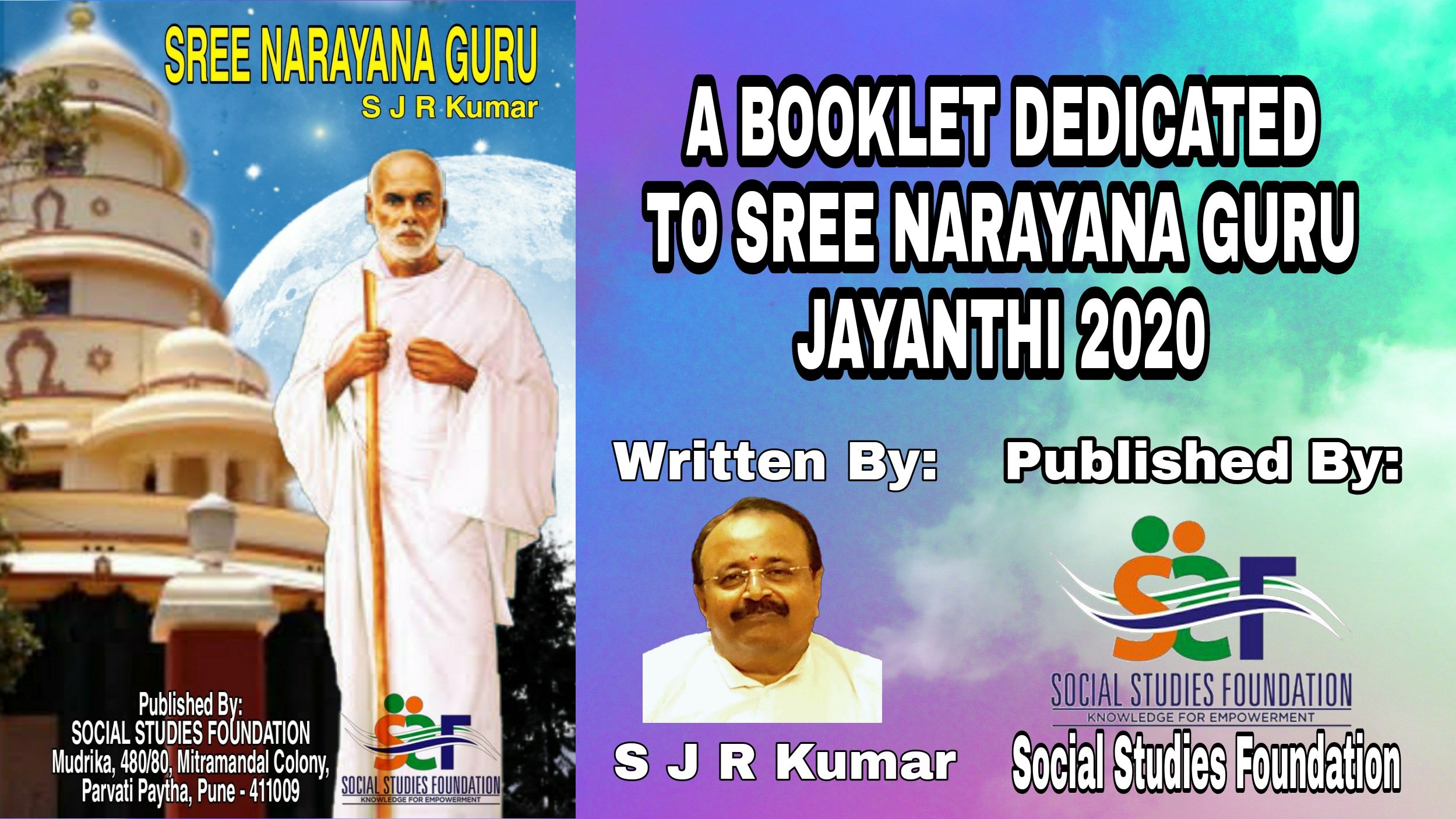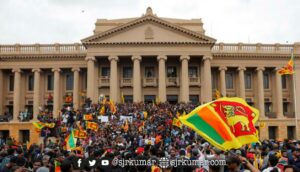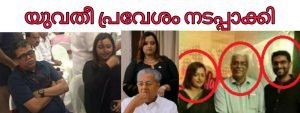SREE NARAYANA GURU


Sree Narayana Guru is one such spiritual leader and reformer whose life and work is always a matter of discussion like none other. It may be because we do not find another Rishi in Bharat who has synchronized the virtues of jñana and karma in their life like him. It may be also because he will fit into the vision and definition of a saint for one and all under any perspective. He may be described as a revolutionary, a reformist, a spiritual guru, an incarnation, or a preacher of adwaitha. He may be described as any one of the above. But the truth is that Narayana Guru is a combination of all these virtues. However, we cannot position Sree Narayana Guru within a narrow perspective based on individual or political interests.
These days many people try to look at and evaluate Sree Narayana Guru based on his preaching under certain specific moments and circumstances, without understanding his real life, his “jñāna-kānda” (sphere of wisdom) and his “Karma-kānda” (sphere of work) as a whole. Out of this the major debate is about his religion and whether he is a Hindu Saint or not. It seems there is a selfish interest in both these arguments. It can be seen that there is no true effort to understand Guru in either of these arguments. In fact, what is the religion of Sree Narayana Guru? Who was Guru? Which is more logical, that he was, or he was not merely a Hindu saint?
Though the structure of Hindu religion is undefinable what makes it the mother of all religions is its great vision which is its soul. There is nothing more gigantic in this world than the treasure of knowledge of the great culture of Bharat which is intricately linked to the name Hindu. It is so wide and vast that any number of rebirths is not enough to learn them completely.

The foundation of the Bhartiya culture is its deep knowledge base like a vastly spread out tree. The word Dharma fits better than the word Hindu to this culture. The everlasting “Sanatana Dharma” is the real soul of Hindu religion.
The Rishis have depicted, visualized, and experienced the unperishable truth of the Universe through Vedas and Upanishads. They got the deep vsion when they tried to find an inner answer to the question “Koham Kuthah Jagath” – Who am I? From where did this world evolve? But the modern science of this 21st century could not find an answer to that question. The ultimate truth of the universe is still a mystery to the modern scientific community. They too have now reached at the “God particle”, which is the physical proof of an invisible. But the ancient Rishis have visualized and experienced that more than 5000 years ago during their solitary penance in the forests. They visualized it not through an external image of happenings but through an internal vision of the source of the happenings.
“Onnonnaay enniyenni thottennum porulodungiyaal drukku” is what is written by Guru in his poem called “Daivadashakam”. It means, by examining the visible range of Universe one by one, we will understand that what we feel out of our senses are mere illussions and what truly exists is the ultimate inner vision”. This inner vision is called the “Brahman”. By knowing that which can give the knowledge of all, is what they have known and experienced. That is me. The true experience of “Aham Brahmasmi” is the foundation of Sanatana Dharma. So, they saw the whole Universe as one without any difference between the stars or planets, living or nonliving things, or countries, religions or casts. The sky of all skies, the light that lights all lights have no boundaries.

This is how “Loka Samastha Sukhino Bhavantu” has emerged as a vision of Bharat. This is how we could address everyone in the whole world as “Amritasya Putra”. This is the pure vision of Hindu religion. And Sree Narayana Guru was an exceptional Saint out of all Saints of this lineage.
Sree Narayana Guru was born on August 22, 1856 in humble surroundings in Chempazhanthi near Thiruvananthapuram. His father was Madan Asan, a farmer, and mother Kutti Amma and he had three sisters. He was named as Narayanan but was affectionately called as Nanu. His family and his father were much revered by the villagers as they also had a sound economic status. Nanu started his education at the age of five in a neighboring school in the old “Gurukula” model. He continued his education at home with his father and uncle. His father, who was also was a teacher, was proficient in Sanskrit, Astrology and Ayurveda. His uncle Krishnana Vaidyan was a reputed Ayurvedic physician. He was taught the basics of the Tamil and Sanskrit languages and traditional subjects such as Siddharupam, Balaprobhodhanam and Amarakosam.
From his early days, Nanu showed great interest in the stories narrated to him by his father from the great epic Ramayana and Mahabharata. He loved solitude and always ndulged himself in deep contemplation. He was intensely drawn to worship at the local temples and composed hymns and several devotional songs. Initially Sree Narayana Guru was a devotee of “Manakkalamma” the family diety. Later on, he became a devotee of Lord Krishna. He wrote the poem “Sreekrishna Darshanam” after he had a direct darshan of Lord Krishna during his student days at a place called Varanappally. Subsequently Lord Shiva and members of Lord Shiva’s family became his worshipful deities.

Out of all he was more devoted to Lord Shiva. This can be well understood from his later life by the installation and consecration of deities of Lord Shiva at various temples to naming of his Ashram at Varkala as “Shivagiri”.
Right from his childhood Nanu expressed strong aversion toward the caste discrimination that existed in the society and often criticized his own relatives for showing such tendencies. At 15 he lost his mother. Nanu spent the most part of his early youth assisting his father in tutoring, and his uncle in the practice of Ayurveda, while devoting the rest of his time for devotional practices. After this elementary education he became the disciple of Raman Pillai Asan, a great Sanskrit scholar of Puthuppally Varanappally family in Central Travancore at the age of 21. At Varanapally Nanu, along with other students, was taught Sanskrit language and poetry, drama and literary criticism, and logical rhetoric. He studied the Vedas and the Upanishads. In 1981 Nanu returned from Varanappally as his father was in his death bed. For a short period, he ran a village school for the children of his neighbourhood. The villagers respectfully addressed him as “Nanu Asan”. He continued to pursue his quest for the ultimate truth and spend more time in the confines of temples, writing poems and hymns and lecturing to villagers on philosophy and moral values.
Even though he was married to one Kaliamma, daughter of a traditional doctor of his village, and the demise of his father, Nanu Asan changed his role as a teacher to that of a Parivrajaka (a spiritual wanderer). It was during one of these days that Nanu Asan met Kunjan Pillai, who later came to be known as Chattampi Swamikal, another great social reformer of Kerala. Recognizing Nanu Asan’s immense passion for yoga and his philosophical genius Chattampi Swamikal introduced him to Thycattu Ayyaavu, a ‘Hatha yogi’.

Under him Nanu Asan masterd various yogic practices including Hatha Yoga. These scholastic experiences and exposures etched a lasting and supreme impact on the later life and philosophy of Narayana Guru.
Thereafter he took up penance in a Cave at Maruthwamala He established a hermitage and lived a secluded life immersed in meditative thought and yoga. Everywhere he lived and performed his penance as a sadhu as per traditions. He maintained that throughout his life. This severe life, in which he subjected himself to extreme sustenance rituals, extended for eight long years at that place. He thus underwent a life of over thirty years in total, abounding in knowledge and harsh experiences, which culminated in the meditative recluse; the point at which Narayana Guru is believed to have attained a state of Enlightenment. His secluded life culminated in the attaining of enlightenment and accepted the name Sree Narayana Guru as per Hindu practices.
Sree Narayana Guru started his karma-kanda, the spiritual activities in the society, during 1888 at Aruvippuram, near Thiruvananthapuram in Kerala by installation of an idol of Shiva. Probably that was a revolutionary act so far unheard of in the whole world. That was a challenge by the Guru to the caste system and caste supremacy that existed for thousands of years. After the consecration of Lord Shiva’s idol what he inscribed there was not panchakshari mantra, but he wrote “Jaathi Bhedam Mathadwesham, Ethumillaathe Sarwarum, Sodarathwena Vazhunna, Mathruka Sthaanamaanithu”. Which means; “This is model place where everyone lives as brothers and sisters, without any difference of religion or ill feeling of castes”.

Thereafter Sree Narayana Guru decided to settle down in a place to continue his spiritual practices and during 1904 he chose Sivagiri at Varkala, twenty miles north of Thiruvananthapuram. In the year 1912 he built the Sharada Devi Temple at Sivagiri. Subsequently he built many temples in and out of Kerala, in Thrissur, Kannur, Anchuthengu, Tellicherry, Calicut, Mangalore etc. either directly or through his disciples. What Guru did was nothing but releasing God from the clutches of caste supremacy and giving everyone a right to experience that divinity. Guru wanted to uplift the people to a state of blissfulness of self-realization of Adwaita through worthful worship. Identifying the self (Atman) with the ultimate (Brahman). Thus, he was declaring that everyone, including those belonging to the depressed class has every right to attain “Atmajnana”, the ultimate self-knowledge. He also started schools to teach Sanskrit to one and all, which was earlier restricted to the upper class alone, at various locations. At a time when people belonging to certain castes referred to as lower caste those days were deprived of even the basic normal education, Guru initiated a revolutionary task by establishing Sanskrit schools for all.
Guru has also given importance to English education along with learning of Upanishad, Bhagwat Geeta etc. He also started courses for learning spiritual and ritualistic performances in temples. He started Brhma Vidyalayam at Sivagiri during 1925. He also formed “Sreenarayana Dharma Sangham” a tradition of monks and gave deeksha to people of all religions and castes. But it may be noted that, while revolutionizing various systems and practices, he has not done anything against the basic principles of Sanatana Dharma. He has reformed a large number of illogical and unfair practices that existed in the society. He advocated for equal rights to one and all irrespective of their caste, creed. He always stood for the rights of women, especially in the field of education and said they have every right even for becoming a monk.
His literary activities include about 65 brief and elaborate works in Sanskrit, Malayalam and Tamil. Out of that about 34 are “stotras” praising the gods and goddesses. He has also translated many important works from other languagaes, including Esavasyopanishad and Thirukkural, a Tamil epic, into Malayalam. Through many of his literary works Guru has given a message that everyone with a soul has the right to attain knowledge and achieve self-realisation. On 9th June 1916, he wrote an article in a magazine called “Prabhudhdha Keralam” declaring that we have no castes.

This was what he has been professing right from 1888 during the consecration of Aruvippuram Temple.
“Akhilarumaathmasukhathinaay Prayathnam Sakalavumingu Sadapi Cheythidunnu. Jagathiyilam-mathamekam” is the definition Guru gave to religion. “Self-satisfaction is the spiritual goal of all religions”. No one gave a proper definition like that to religion, before or after him. At times religions becomes the cause for unrest, war and riots because we do not understand its real spiritual goal. He has very well explained his vision about religion in many of his writings. His opinion about religion becomes more explicit during a conversation with Sahodaran Ayyappan and Kottukkoyikkal Velayudhan during 1923. The discussion was based on religious conversion that was taking place during that period. It was during that time Guru said “Mathamethaayaalum Manushyan Nannaayaal Mathi”.” Let whatever be the religion, people should be good”. By saying so Guru is not negating religion. If someone says that “Let the medicine be anything, but the disease should be cured”, does not mean that there should not be any medicine. His intention was to stress the importance of being a good human. And he never negates religion or the difference between religions. He said “No” to rivalry between religions and not about religion.
During 1924 Guru convened a meeting of all religions at Aluva Adwaitha Ashram, which was the second in the world and the first in Asia of a similar kind. Guru gave a slogan for that meeting, “Not to argue or to win, but to know and to inform”. In a note prepared by Guru for this meeting he has made the following very important findings about religions.

“The religions which were established for the spiritual salvation has been misused by the priesthood for material benefits. Religion which was meant to be a spiritual matter has been degenerated into a caste matter. It looks as if the religious heads intend to convert the whole world into one religion under them, like kings who wish to conquer and rule the whole world. But the religious world has no physical boundaries. Because of that, like the waves during a cyclone, they fight each other and creates unrest continuously. To save human race from this menace the religion should become a spiritual matter.”
While participating in the anniversary meeting of the Shree Narayana Dharma Paripalana Yogam (SNDP) held at Palluruthy, near Kochi in 1927, he made the following declaration which probably was the last one from him. In that he said: “Religious belief should be one that allows freedom, one that is acceptable to the cultured society, and one that will lead the humans to ideal principles. Sanatana Dharma which says, One Caste, One Religion and One God, is such a religion”. During 1928 Sree Narayana Guru’s health conditions declined and attained samadhi on 20th September 1928.

Sree Narayana Guru was not an ordinary saint. He never added the title “Swami or Sanyasi” to his name. He was dressed as any other ordinary man of his times. First time he wore a saffron robe was during his visit to Sri Lanka during 1918 and he accepted that from one of his disciples. He always used to say that humans and nature are his gurus. He believed in nonviolence. In one of his works he has mentioned that we should not torture even an ant. His invaluable contributions to the reformation of Sanatana Dharma and the society at large, his teachings to establish and practise Sanatana Dharma for attainment of salvation for all classes of people, his continued efforts in esta lishing temples for spiritual, social and moral upliftment, his all-round efforts to eradicate caste discriminations, and his message of peaceful coexistence, gives Sree Narayana Guru an esteemed and unparalleled position in the history of Bharat as a devote monk and a great reformer.
References & Credits: Gurunarayana Sourabham, Dr. Geetha Suraj, Gurunarayana Seva Nikethan and other public documents about Sree Narayana Guru.





